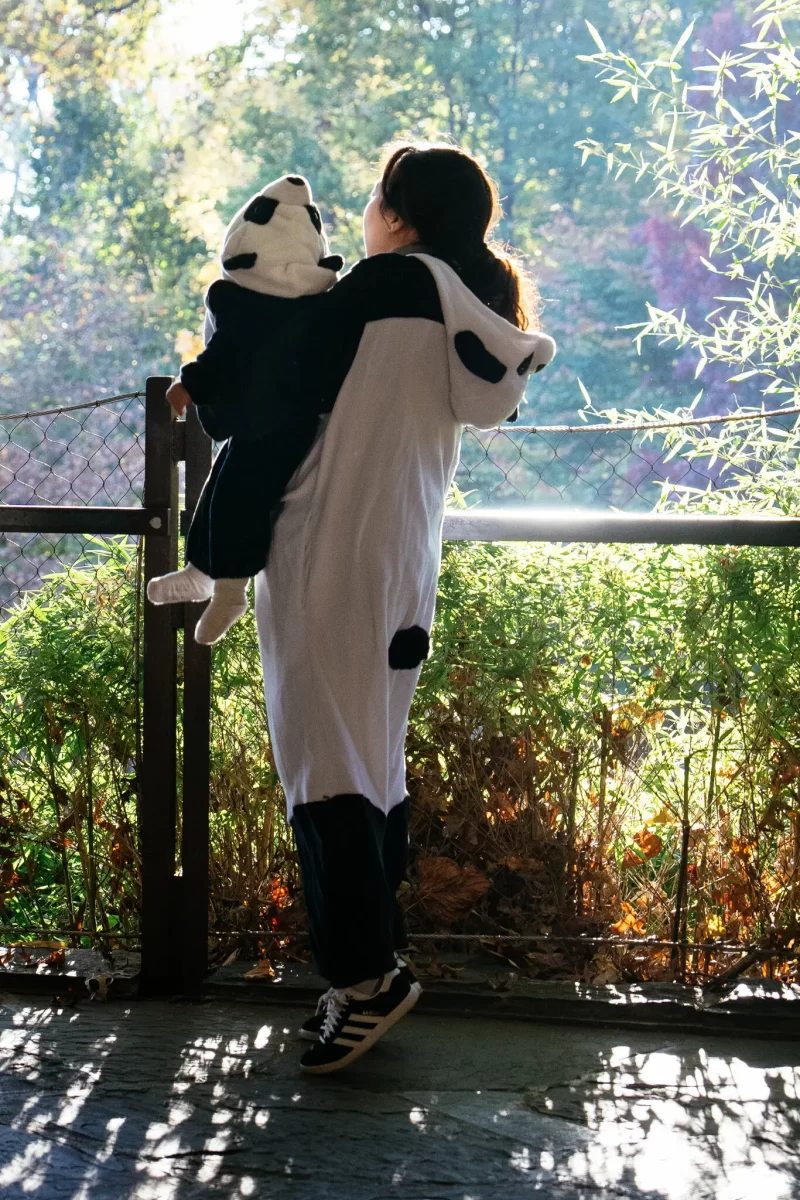Would you ever hug a panda? These fuzzy, cuddly bears with an iconic black and white colorway are the favorite animal of many, and with their seemingly clumsy behaviors, they look harmless. But are they really?
A “panda hugger” is a “pejorative term that is often used to refer to those people who want to have a friendly relationship with China,” explained Dr. Lei Guang (Claire ‘17 and Rolan Guang ‘22), So Family Executive Director of the 21st Century China Center at the University of California San Diego (UCSD). He has held his position for 12 years, being a part of the center’s founding group, and studying political science with China as his region. Dr. Guang is originally from China, and given the country is changing so quickly, he wants “to understand the social and political changes and their implications for the Chinese people and the world.”
The expression, “panda hugger,” goes hand in hand with the term, “panda diplomacy,” which refers to “the Chinese government’s attempt to improve diplomatic relations with other countries through charm offensives like the gifting of giant pandas,” Dr. Guang said. “More broadly, diplomacy embodies China’s utilization of ‘soft power,’ signifying a form of cultural influence. The endearing appeal of pandas helps to foster positive sentiments and promote favorable perceptions of China.”
For more than half a century, giant pandas have resided in the U.S, as gifts from the Chinese government to the American people. “Chinese culture values gifting,” Dr. Guang mentioned, so when Patricia Nixon, President Richard Nixon’s wife, mentioned her fondness for the pandas in 1972 while on a landmark trip, the Chinese premier decided to gift two pandas to the Smithsonian’s National Zoo in Washington D.C.
“I don’t think the Chinese premier [gifted the first pandas] for ‘strategic’ reasons – it was a friendly gesture, and Premier Zhou basically wanted to signal to the American side that China was open for improving relations with the U.S. after decades of mutual hostility,” Dr. Guang commented, “Little did [we] know then that the giant pandas would one day come to symbolize ‘soft power’ for China.”
As the years progressed, more and more pandas were sent to different parts of the U.S. and across the world –– but under a specific loan agreement, beginning in 1984, according to an article published by Al Jazeera. Instead of being presented as gifts, the pandas were loaned for 10 years, but the loan could be extended. This shift helped China build guanxi, meaning “trust” in Mandarin Chinese, promoting mutual partnerships.
Since 1984, the panda loans have been extended several times. In the National Zoo’s case, the third extension of their loan agreement ends in December, and their three bears have already been sent back to China aboard a 19-hour FedEx flight, known as the Panda Express, according to the New York Times. Due to rising tensions between the two nations, some Americans are wondering if geopolitics are why the loans are ending –– but National Zoo officials and scientists clarify that the pandas are at the age when they should return back, the same New York Times article explained.
As of the present day, the only pandas left in the States are in the Atlanta Zoo, but they will also be returned by the end of the year. Soon enough, the only panda bear in all of the Americas will be Xin Xin in Mexico City, under the assumption that China does not send anymore pandas, according to an article published on November 8 by CNN.
But that’s no longer the assumption.
Just a week later, on November 15, Chinese President Xi Jinping met with President Joe Biden for their first in-person meeting in a year, in Woodside, California, according to the Associated Press. The two agreed that they would try to reduce tensions, and during a dinner speech at the end of the day alongside other business leaders, President Xi hinted that China will send new pandas to the US. He called the bears “envoys of friendship between the Chinese and American peoples.”
“We are ready to continue our cooperation with the United States on panda conservation, and do our best to meet the wishes of the Californians so as to deepen the friendly ties between our two peoples,” he said. He didn’t share extensive details, but it is likely that the new bears will be coming to California – San Diego in particular.
“The zoo community has been clamoring for renewing the contract for new pandas to come,” Dr. Guang said. “In fact, our center was once invited by the San Diego Zoo to consult on the culturally appropriate ways to make such a request of the Chinese authorities. We are rooting for the pandas’ return to San Diego, of course. I’m glad to see that it is quite probable that we will get one – or could it be two – sometime soon.”
Dr. Guang concluded, “As long as the public continues to adore pandas, their use for PR [Public Relations] purposes will persist. Frankly, I find this preferable to contending with the ‘wolf warriors,’ a term denoting China’s assertive and confrontational diplomats.”
While even zoo experts and researchers cannot be 100% certain if and when the pandas will make their grand return to the States, San Diego, for one, can start getting excited. The city has been panda-less since 2019 –– but the hiatus may be broken in the coming months. It’s time to pull out that panda merch from the back of your closet and prepare for the homecoming of our fuzzy friends.









